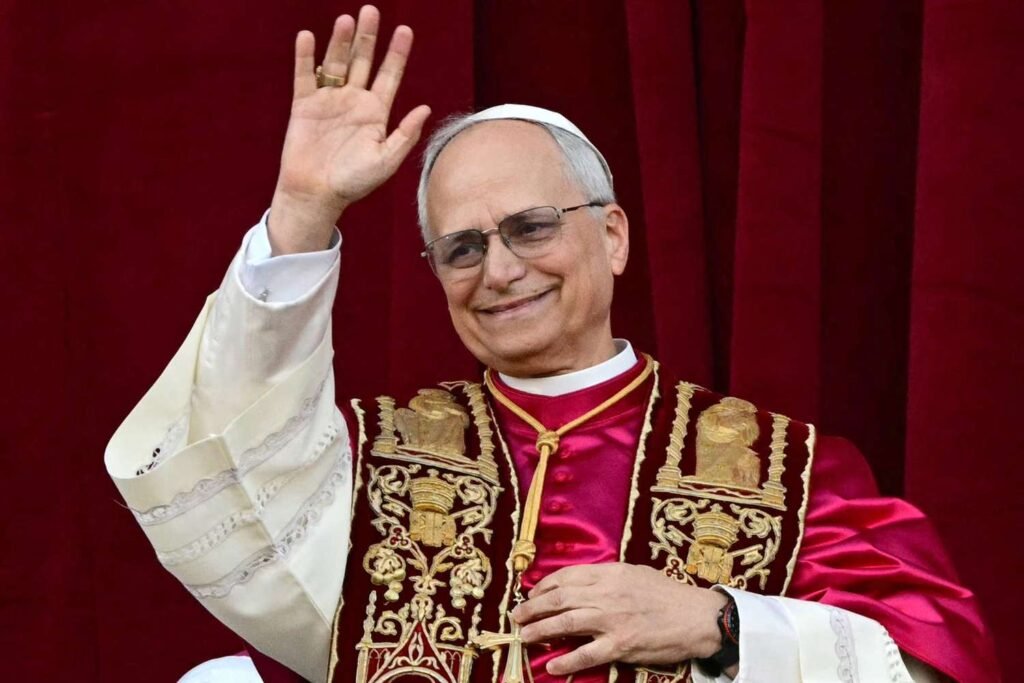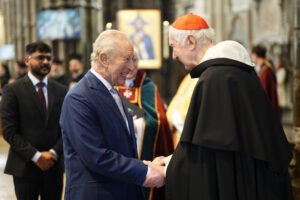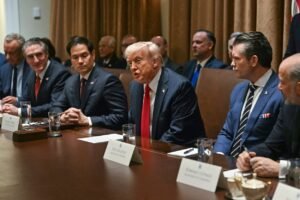Can Pope Leo Solve the Vatican’s Financial Black Hole?

pope-leo-xiv
https://youtu.be/9HWGAmUk_Y0
Introduction to the Vatican’s Financial Challenges
The Vatican, as the spiritual headquarters of the Roman Catholic Church, is experiencing significant financial challenges that threaten its operational stability. These financial hurdles stem from a combination of existing debts, historical financial mismanagement, and a lack of transparency in its financial practices. As a sovereign entity, the Vatican is not just a religious institution but also a complex organization that oversees properties, investments, and various charitable activities worldwide. However, the recent years have highlighted the urgent need for financial reform and increased accountability.
The Vatican’s debt levels have reached a concerning point, raising questions about its long-term viability. Reports indicate that various funding mechanisms and revenue-generating activities have not been enough to absorb the mounting liabilities. This situation is exacerbated by the limited financial transparency that has characterized the Vatican’s fiscal approach over previous decades. Such a lack of clarity has fostered skepticism among stakeholders, including clergy, faithful, and financial institutions.
Financial mismanagement has also played a significant role in the Vatican’s current predicament. Past investments, often characterized by poor decision-making, have led to substantial financial losses. Moreover, the reliance on traditional income sources, such as donations and collection plate revenues, is becoming increasingly inadequate in a rapidly changing economic environment. Consequently, the Vatican’s ability to maintain its global outreach and support charitable initiatives is at risk. The implications of these financial woes are profound, with a direct impact on the papacy’s ability to carry out its mission effectively, leading to a pressing need for innovative solutions.
As discussions emerge regarding potential solutions to address these financial challenges, the role of Pope Leo, with his profound understanding of the Church’s spiritual and operational intricacies, could be pivotal. The appointment of an adept leader at this juncture could bring about the necessary reforms to revive the Vatican’s financial health.
Understanding the Vatican’s Financial Structure
The Vatican, as an independent city-state and the spiritual center of the Roman Catholic Church, possesses a unique financial structure that has evolved over centuries. Its income sources are diverse, including donations from parishes around the world, investments, real estate holdings, and revenue generated from various organizations affiliated with the Church. One of the most significant sources of income is the Peter’s Pence collection, which is a fund derived from donations made by Catholics globally to support the Pope’s charitable initiatives.
In addition to these contributions, the Vatican also receives funds from its investments in various sectors, including financial markets and real estate. The Vatican City has substantial real estate assets not only within its own borders but also in some of the most affluent areas around the globe. These investments are managed by the Administration of the Patrimony of the Apostolic See (APSA), which safeguards the Vatican’s financial stability while ensuring that funds are utilized effectively for Church needs.
Expenditures within the Vatican are primarily allocated toward the maintenance of its institutions, support for the global Catholic Church, and involvement in various social justice projects. The Vatican also spends on the salaries of its employees, upkeep of its cultural heritage, and funding for missions worldwide. This varied financial outlay reveals the complexities of managing a financial institution whose responsibilities are enmeshed with its religious mission.
Another critical aspect of the Vatican’s financial structure is its extensive network of financial institutions, such as the Institute for the Works of Religion (IOR), commonly referred to as the Vatican Bank. Despite its purpose of managing assets for charitable purposes and ensuring the Church’s financial integrity, the Vatican Bank has often been at the center of controversies related to transparency and accountability. Thus, financial management in the Vatican remains a multifaceted challenge, balancing spiritual commitments with the realities of fiscal management.
Historical Context of Vatican Finances
The financial history of the Vatican is complex, marked by periods of both prosperity and adversity. Various popes have navigated through financial crises, each leaving behind a distinct legacy that shapes the Vatican’s current economic landscape. Historically, the Vatican generated revenue through several avenues, including donations, investments, and sales of religious artifacts. However, reliance on donations has often rendered the institution vulnerable to economic fluctuations and socio-political changes.
One notable financial crisis occurred during the papacy of Pope Leo XIII in the late 19th century. The Vatican faced significant challenges after losing its temporal power due to the unification of Italy in 1870, which curtailed its influence and revenue sources. In response, Pope Leo XIII undertook rigorous efforts to stabilize Vatican finances by promoting fiscal responsibility and encouraging the development of income-generating assets. This led to the establishment of a more structured financial management system, which prioritized transparency and accountability in financial dealings.
In contrast, the later decades of the 20th century witnessed various mismanagement issues. Scandals involving the Vatican Bank during the papacy of Pope John Paul II showcased the pressing need for financial reform. The unregulated nature of its financial operations attracted significant scrutiny from both the media and governmental bodies. These crises prompted subsequent popes, including Pope Benedict XVI and Pope Francis, to initiate comprehensive reforms aimed at restoring credibility and trust in the Vatican’s financial practices.
Throughout history, the Vatican has encountered numerous successes and failures. The varying responses to financial crises reveal not only the adaptability of its leaders but also the lessons learned during tumultuous times. The evolution of financial practices within the Vatican underscores the importance of prudent financial stewardship, aiming to ensure sustainability in an ever-changing global economy.
Pope Leo’s Background and Financial Expertise
Pope Leo, born into a modest family, has long been a member of the clergy, demonstrating a keen understanding of ecclesiastical matters throughout his life. His journey within the Church began at a young age, leading him ultimately to ascend to the papacy, where he has garnered respect and admiration across the global Catholic community. With each role he has undertaken, from parish priest to Archbishop, he has developed a significant grasp of the multifaceted dynamics of Church management, crucial for an institution as vast and complex as the Vatican.
In addition to his theological training, which forms the bedrock of his leadership, Pope Leo has made strides in acquiring a wealth of knowledge regarding financial administration. Early in his clerical career, he served as an advisor to the Vatican’s financial council, where he was responsible for assessing the allocation of resources within various Church initiatives. This experience, coupled with a rigorous study of economics—specifically focusing on the intersection of ethics and finance—has equipped him with the tools necessary to comprehend the unique challenges faced by the Vatican’s financial apparatus.
Pope Leo’s philosophy regarding wealth and financial stewardship is influenced by the social teachings of the Church, emphasizing ethical responsibility and support for the underprivileged. He believes that financial resources should not merely be hoarded but should be utilized to foster community and promote the Church’s mission on a global scale. Under his guidance, there is a vision of transforming financial practices within the Vatican to align with the principles of transparency and accountability. This dedication to prudent financial management and ethical considerations positions Pope Leo as a potential catalyst in addressing the persistent financial black hole within the Vatican.
Assessment of Current Financial Policies
The Vatican’s current financial policies have been under scrutiny, particularly in light of the growing concerns surrounding financial transparency and accountability. Over the years, the Vatican has implemented several provisions aimed at regulating its financial activities; however, systemic inefficiencies and lack of oversight continue to undermine these efforts. The existing financial framework appears to be fragmented, with various departments operating independently, leading to potential mismanagement of resources and a failure to adhere to global financial standards.
One significant aspect of the Vatican’s financial policies is its reliance on donations and contributions from dioceses around the world. While this model fosters a strong sense of community and support, it has also introduced instability, as fluctuations in donations can directly impact the financial health of the Holy See. Consequently, financial dependence on external sources raises questions about sustainability and efficiency. Additionally, the absence of a clear budgeting process has made it challenging for the Vatican to allocate resources effectively, hindering strategic planning and prioritization of essential projects.
Moreover, the lack of rigorous auditing practices has allowed inefficiencies to persist unchecked. Reports suggest that overlapping responsibilities among different entities have resulted in a duplication of efforts rather than streamlined processes. To address these shortcomings, a comprehensive assessment of current fiscal policies is crucial. This evaluation should pave the way for innovative financial management approaches that can help restore trust and improve operational effectiveness.
Under Pope Leo’s potential leadership, there is an opportunity to revamp these financial policies, emphasizing strength in accountability and rigor in financial practices. By establishing a centralized financial authority, enhancing transparency, and fostering a culture of responsible stewardship, the Vatican can work towards mitigating its fiscal challenges and ensuring a more sustainable financial future.
Proposed Solutions and Strategies by Pope Leo
Pope Leo has recognized the pressing need to address the Vatican’s significant financial challenges, often described as a financial black hole. A judicious blend of transparency reforms, accountability measures, investment strategies, and expert collaborations could potentially transform the fiscal landscape of the Holy See. These solutions aim not only to mitigate current financial issues but also to instill a culture of prudence and integrity in the administration of the Vatican’s resources.
One of the pivotal strategies proposed involves enhancing transparency in financial reporting. By adopting standardized financial practices, the Vatican could provide clearer insights into its revenue streams and expenditures. This initiative could help restore trust among stakeholders, including the laity, benefactors, and international financial institutions. Further, the establishment of a third-party audit committee might ensure that financial dealings are conducted with the utmost integrity, thereby reinforcing accountability in financial matters.
Moreover, Pope Leo may advocate for diversified investment strategies that align with the Church’s moral teachings. This might include exploring ethical investment opportunities while also ensuring that the Vatican’s investment portfolio is managed prudently to generate sustainable returns. Engaging financial experts to craft a robust investment framework could assist in navigating the complexities of global markets while adhering to Catholic social teachings.
Collaboration with financial professionals and stakeholders outside the Church might also yield beneficial insights and strategic partnerships. This collaborative approach could facilitate knowledge exchange and innovation, ultimately leading to more effective financial management practices. By fostering strong relationships with financial institutions and experts, the Vatican could leverage their expertise to navigate economic uncertainties more effectively.
In conclusion, the proposed solutions by Pope Leo encompass a comprehensive strategy that addresses both the immediate and long-term financial issues faced by the Vatican. Through a commitment to transparency, sound investment practices, and collaborative efforts, the Holy See can aspire to overcome its financial challenges and achieve fiscal sustainability.
The Role of the Global Church Community
The financial revitalization of the Vatican is a substantial challenge that requires not only strategic planning and management but also the active participation of the global Church community. The complexities of the Vatican’s financial situation often carry moral implications that extend beyond mere numbers; they resonate deeply with the principles of stewardship and collective responsibility touted by the Church. As Pope Leo endeavors to reform the financial framework of the Vatican, the Church community plays a pivotal role in either bolstering or obstructing these efforts.
Collaboration stands as a cornerstone for effective fundraising initiatives that could significantly alleviate financial strains. The global Church community encompasses a multitude of parishes, archdioceses, and religious organizations, all of which can contribute resources and support in various forms. Through collective fundraising campaigns, such as charity drives or missionary outreach programs, the community can channel its efforts towards sustainable financial solutions. This ethnicity in engagement can foster a sense of unity within the Church while also promoting shared accountability in financial matters.
Furthermore, the moral imperative for financial support cannot be overstated. Many congregants may feel that their contributions should go towards fruitful endeavors that align with the Church’s mission. Engaging the global Church community in transparent discussions about the financial needs of the Vatican can help to cultivate understanding and trust. This dialogue should emphasize the importance of wise resource allocation and the effective use of funds, ensuring that financial support translates into impactful initiatives that resonate with the values of the Church. Fostering a culture of collaboration and shared responsibility may not only aid Pope Leo’s efforts but also reinforce the spiritual tenets that bind the global Church community together.
Potential Challenges and Opposition
Pope Leo’s ambitious plans for financial reform within the Vatican are not without their potential challenges and opposition. One of the foremost obstacles he may encounter stems from resistance within the Church itself. Within any large institution, particularly one as historically entrenched as the Vatican, change is often met with skepticism. Clergy and laypersons who have benefited from the current financial arrangements may oppose reforms that threaten their interests, leading to internal conflicts that could undermine the Pope’s initiatives.
Moreover, the complexity of existing financial systems presents a significant hurdle for Pope Leo. The Vatican’s financial infrastructure is often characterized by a convoluted web of assets, investments, and holdings that have evolved over decades. Unraveling this intricate system demands not only a clear strategy but also the expertise required to navigate the nuances of ecclesiastical finance. Missteps in this territory could lead to unintended consequences, such as destabilizing existing revenue streams that support various Church missions worldwide.
External factors also play a critical role in shaping the success of the Pope’s financial reform endeavors. The prevailing global economic conditions may dramatically impact fundraising efforts and the overall revenue generated by the Vatican’s assets. Economic downturns, fluctuating markets, or shifting donor sentiments could greatly affect the financial stability Pope Leo aims to achieve. Furthermore, public perception and trust in the Church’s financial management will be crucial. A history of financial mismanagement and scandal can lead to reluctance from potential benefactors or increased scrutiny from the media, placing additional pressure on reform efforts.
In navigating these multifaceted challenges, Pope Leo must adopt a transparent and inclusive approach to foster cooperation and gain support. By addressing resistance within the Church and acknowledging the complexities of the financial systems involved, he can work towards creating a sustainable financial future for the Vatican.
Conclusion: The Future of the Vatican’s Financial Health
The financial health of the Vatican stands at a crucial juncture, particularly in light of the recent reform initiatives under Pope Leo. As discussions surrounding fiscal transparency and accountability gain traction, the potential outcomes of these reforms could significantly alter the financial landscape of the Holy See. With a renewed emphasis on sustainable financial practices, the Vatican may be better positioned to tackle its longstanding fiscal challenges.
Pope Leo’s vision for reform centers on accountability in Church finances, a necessity that is increasingly recognized in today’s world. By implementing comprehensive financial auditing processes and establishing a more transparent budgetary framework, the Vatican aims to regain trust among its stakeholders. This shift could not only help to mitigate the existing financial black hole but also cultivate an environment where donors feel encouraged to contribute, knowing that their funds are managed responsibly.
Furthermore, adopting sustainable financial practices will allow the Vatican to adapt to contemporary economic realities. Engaging in proactive fiscal management, such as diversifying income sources and prudently managing investments, is essential to ensure long-term viability. These measures will facilitate the Vatican’s ability to fulfill its ecclesiastical mission effectively, which depends significantly on financial stability.
Ultimately, the success of Pope Leo’s reforms hinges on the Church’s willingness to embrace change and institutionalize accountability. If these efforts resonate not only within the Vatican but also among its global congregation, the future may hold a more secure financial environment for the Holy See. This would not only benefit its internal operations but also strengthen its mission outreach, enabling the Church to serve its followers more effectively.










